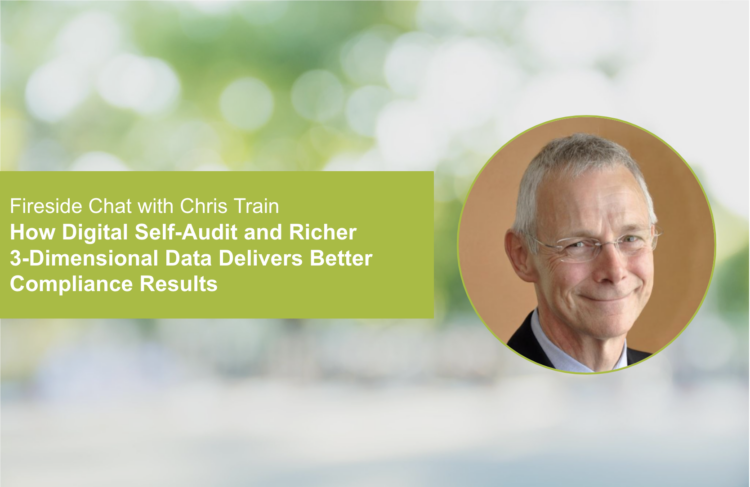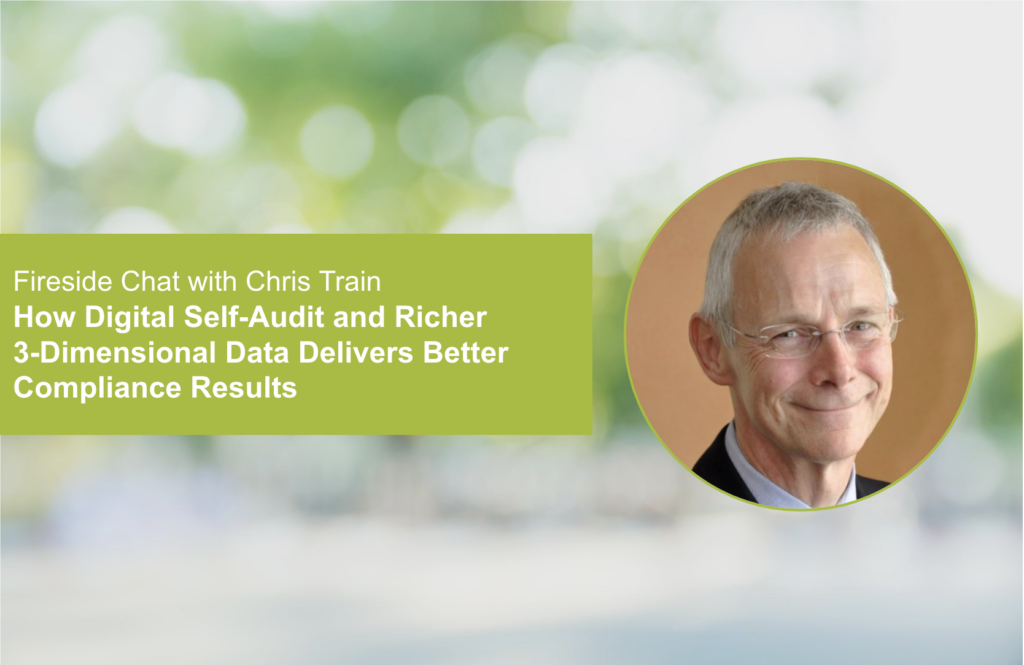
We met Chris Train, Chair at Southeast Water & Clean Power Hydrogen, and Vyn Advisor, for a fireside chat on a wide range of topics including the use of technology for self-audit, the benefits of richer 3-dimensional data, role of the regulator in delivering faster change, and more.

Chris, could you tell us a little bit about yourself?
I have worked in energy and utilities for 39 years in all aspects of the business, both from an operational and a strategic perspective. I currently chair Southeast Water and Clean Power Hydrogen. I’m also a member of the Nuclear Decommissioning Authority Board and sit on the Government Hydrogen Advisory Council.
Three years back, you spoke to us on the rising importance of ‘self-audit’ or ‘self-regulation’ in the energy and utility industry, what triggered those thoughts?
The thought was triggered by a business issue. I work in a highly regulated environment and we often have to use data as evidence of the actions that we’ve undertaken. We were looking at how to use data and technology for workforce enablement, particularly how to capture data and demonstrate quality & safety compliance through it. We needed to be able to record data and retrospectively go back and interrogate it and apply intelligence to it, particularly around trends.
We had done a huge amount of work on forms but forms tend to be very two-dimensional. As a consequence, it’s difficult to go back and analyse the data. Having a richer data set with video and 3-dimensional data allows you to interrogate it in a more meaningful way. It also enables the workforce to communicate easily.
“Forms tend to be very two-dimensional. Having a richer data set with video and 3-dimensional data allows you to interrogate in a more meaningful way”
In this context, what do you think will help accelerate a culture of self-audit and better data?
Since our initial discussions, Vyntelligence has delivered a number of great examples that are giving really impressive results for organisations by enabling digital self-audit.
The technology has been adapted as the market has changed and that really builds confidence for people coming along and saying, ‘do you have proof that this will solve and tackle my problem and challenge?’
Business is about data, applying intelligence to that data and then applying judgments to your decision making. The better your data, the better your business decisions. When you’re making better business decisions, you’re delivering better outcomes and benefits for customers.
“Business is about data, applying intelligence to that data and then applying judgments to your decision making. The better your data, the better your business decisions.”
What do you think is holding leaders back to promote this culture of self-audit, or self-evaluation, more widely in the industry?
It is a challenge of change. There’s a tendency to use technology to facilitate the way that you run the business today, whereas you need technology that can be adaptive and deliver for customers tomorrow.
There’s this fear – a lot of us have been involved in large IT implementations, and they come with a huge amount of risk. That’s why the ability to start small and get to know the technology and understand what it can do for you is important.
“There’s a tendency to use technology to facilitate the way that you run the business today, whereas you need technology that can be adaptive and deliver for customers tomorrow.”

Which functional leader do you think is best placed to embrace the change?
In order to facilitate change, you need to find the person who owns the problem that you’re trying to solve. Value to the business is always key.
The person that feels the pain is going to champion the technology in the organisation. The IT department is important because they are going to facilitate the enablement of the technology. But the person who’s solving the business problem is absolutely key to get that technology adopted.
Start with the person with the problem, then help them facilitate the change through the organisation and build the confidence that this change is going to deliver value for the business.
What role can the regulator play to accelerate adoption of self-audit to evidence compliance?
The regulator is critical as an enabler and facilitator of change. They provide incentives and means for organisations to deliver and embrace change.
Digitalisation is a huge opportunity and can potentially be complex. Therefore, to help the regulator understand what they should and shouldn’t be incentivising around digitalisation is very important. We’re in a critical time of energy transition and the opportunity of digitising systems and processes and enabling that change in the future is hugely important.
The initiatives that industry bodies and regulators typically take on are multi-year projects. How can we get them to consider easier to implement projects?
Certainly, there is an opportunity for creating short-term benefits around digitisation. The roles of both the company and the regulator within an enablement are very important. I see the regulatory framework as an enabler. The driver is the organisations’ ability to derive efficient and effective outcomes for customers, but obviously within that regulatory context.
In addition to the economic regulator providing the right kind of incentives, the safety regulator also plays an important role. The safety regulator provides the opportunity to create better and multidimensional records to evidence compliance. This helps to facilitate change over time.
“In addition to the economic regulator providing the right kind of incentives, the safety regulator also plays an important role with the opportunity to create better and multidimensional records to evidence compliance”
What are your top tips for leaders who wish to embrace change?
- Create the space – organisations are busy, so it’s important to create the space to embrace innovation and digitalisation. You will make more innovative short-term decisions if you put them in the context of the longer term.
- Enable the person who’s got the problem as a champion within the business. As a leader, support them in taking the risk and in implementing the technology.
- Don’t worry about getting everything perfect up front. Use the flexibility inherent in the technology. Energy and utilities are built on some large, long term legacy systems. And so we get into a mindset of having to get everything perfect because of the scale of the change that is necessary. But when you’re applying smaller, more flexible and adaptive technology, you need to implement them quickly and develop it as you go along.
- Always think about the outcomes that you’re trying to deliver as a consequence of the adaptation of the technology.
Interested in our previous fireside chats? Click here



